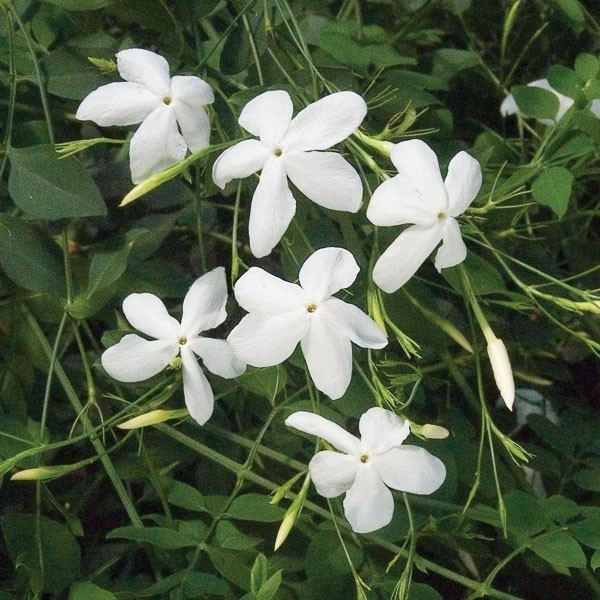Rank Species | Genus Jasminum Higher classification Jasmine | |
 | ||
Similar Jasmine, Jasminum officinale, Oleaceae, Arabian jasmine, Jasminum polyanthum | ||
Jasminum grandiflorum, also known variously as the Spanish jasmine, Royal jasmine, Catalonian jasmine, among others (chameli in Urdu) is a species of jasmine native to South Asia, the Arabian peninsula (Oman, Saudi Arabia), Northeast Africa (Eritrea, Ethiopia, Djibouti, Somalia, Sudan), the African Great Lakes (Kenya, Uganda, Rwanda), and the Yunnan and Sichuan regions of China. The species is widely cultivated and is reportedly naturalized in République de Guinée, the Maldive Islands, Mauritius, Réunion, Java, the Cook Islands, Chiapas, Central America, and much of the West Indies.
Contents

Description

It is a scrambling deciduous shrub growing to 2–4 m tall. The leaves are opposite, 5–12 cm long, pinnate with 5–11 leaflets. The flowers are produced in open cymes, the individual flowers are white having corolla with a basal tube 13–25 mm long and five lobes 13–22 mm long. The flower's fragrance is unique and sweet.
Subspecies
Two subspecies are recognized:

Uses

In India, its leaves are widely used as an Ayurvedic herbal medicine and its flowers are used to adorn the coiffure of women. In Pakistan, it grows wild in the Salt Range and Rawalpindi District at 500–1500 m altitude. It is closely related to, and sometimes treated as merely a form of, Jasminum officinale. The plant is known as "saman pichcha" or "pichcha" in Sri Lanka. Buddhist and Hindu temples use these flowers in abundance.
It is widely cultivated as an ornamental plant in warm temperate and subtropical regions.
By method of solvent extraction the Jasmine flowers are converted into Jasmine Concrete and Jasmine Oleoresin (sold as Jasmine Absolute). Both products have a huge demand in the fragrance industry.
Methyl jasmonate isolated from the jasmine oil of Jasinum gradiflorum led to the discovery of the molecular structure of the jasmonate plant hormones.
